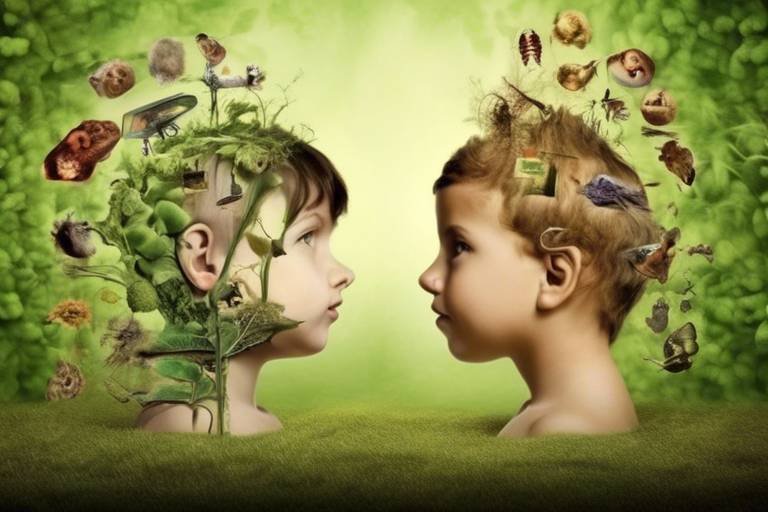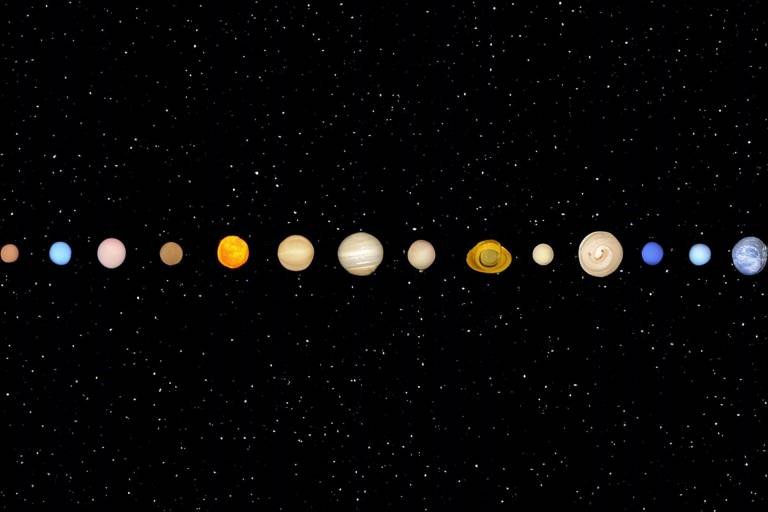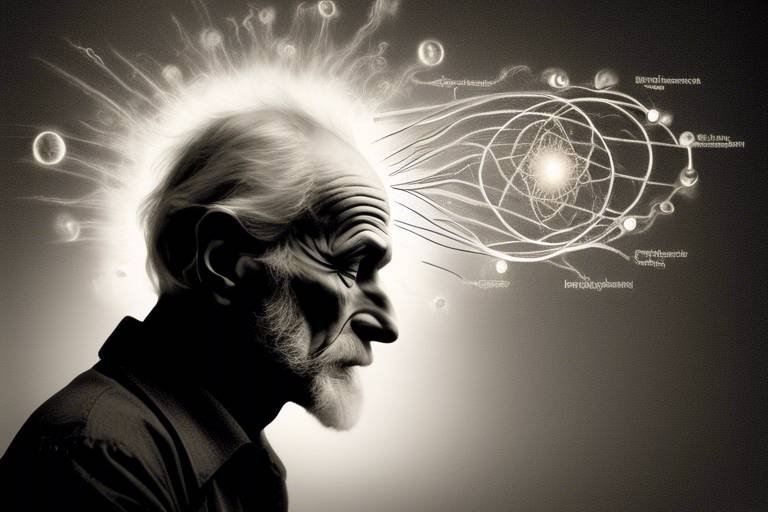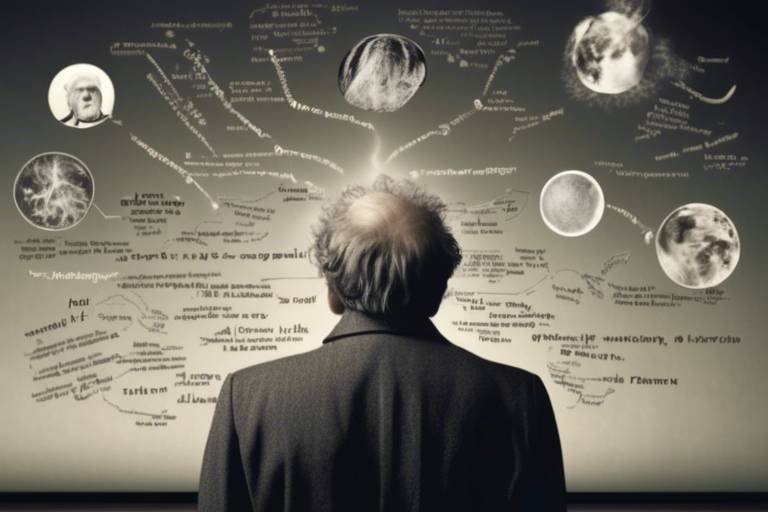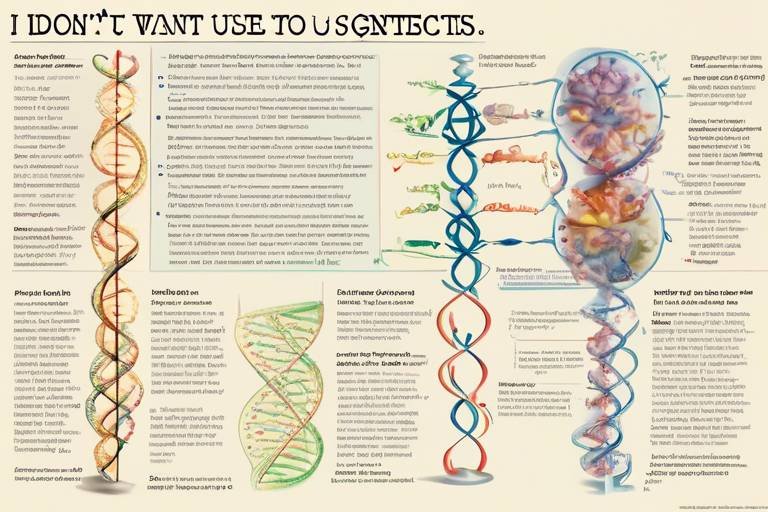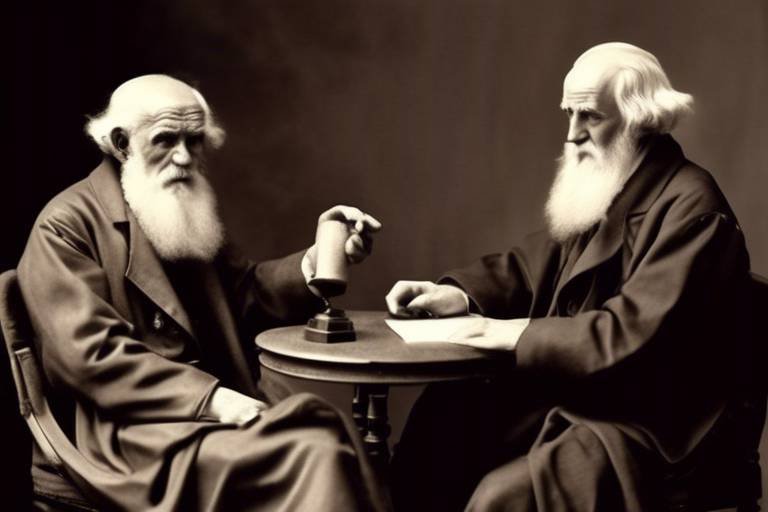Philosophy of Paleontology: Understanding Prehistoric Life
The study of paleontology is not just about digging up bones and piecing together the past; it’s a profound exploration into the very essence of life itself. It prompts us to ask big questions about our existence and the world we inhabit. What does it mean to be alive? How do the remnants of creatures that roamed the Earth millions of years ago inform our understanding of evolution and extinction? This article delves into the philosophical underpinnings of paleontology, examining how our understanding of prehistoric life shapes our view of evolution, extinction, and the nature of scientific inquiry.
At its core, paleontology serves as a bridge connecting us to a time long before humans walked the planet. The fossils we uncover are like time capsules, each one telling a unique story about the organisms that once thrived in diverse ecosystems. They challenge us to think critically about the processes of life, the inevitability of death, and the intricate tapestry of existence that has unfolded over eons. By studying these remnants, we gain insight not only into the biological aspects of these ancient beings but also into the philosophical implications of their existence and their eventual demise.
As we embark on this journey through the philosophy of paleontology, we will explore how these ancient life forms influence our understanding of evolutionary theory, the role of extinction in shaping biodiversity, the perception of time in our comprehension of life’s history, and the interdisciplinary nature of paleontological study. Each section will highlight the unique interplay between science and philosophy, revealing how our quest for knowledge about the past can illuminate the future.
Throughout this exploration, we will also confront the ethical considerations that arise from our findings. As we learn about the past, we must also reflect on our responsibilities in the present. The lessons learned from extinct species can serve as a guide for our actions today, urging us to protect the biodiversity that remains. Ultimately, the philosophy of paleontology invites us to ponder our place in the grand narrative of life on Earth, encouraging a deeper appreciation for the fragile interconnectedness of all living things.
- What is paleontology? Paleontology is the scientific study of the history of life on Earth through the examination of plant and animal fossils.
- Why is paleontology important? It helps us understand the evolution of life, the processes of extinction, and how past life forms adapt to changing environments.
- How do fossils form? Fossils typically form when organisms are buried by sediment, which eventually hardens into rock, preserving the shape of the organism.
- What can fossils tell us about prehistoric life? Fossils provide insights into the physical characteristics, behaviors, and environments of ancient organisms.

The Nature of Fossils
Fossils are more than just remnants of the past; they are the primary evidence that connects us to prehistoric life. Imagine walking through a museum filled with ancient bones and imprints of creatures that roamed the Earth millions of years ago. Each fossil tells a story, a narrative woven into the fabric of time itself. But how exactly do these fossils form, and what do they signify in the grand scheme of evolution?
The formation of fossils is a fascinating process that begins when an organism dies. Instead of decomposing completely, the remains become buried under layers of sediment. Over time, minerals seep into the bones or shells, replacing organic material and creating a rock-like structure. This process, known as permineralization, can take thousands to millions of years, resulting in a fossil that preserves not just the shape but also some details of the organism's structure.
But the significance of fossils extends beyond their formation. They serve as a crucial link to understanding the evolutionary history of life on Earth. By studying fossils, paleontologists can piece together the puzzle of how species have changed over time, adapting to their environments and sometimes facing extinction. This exploration raises philosophical questions about the nature of existence itself: What does it mean to evolve? Are we merely products of our environment, or do we have a role in shaping our destiny?
Moreover, the interpretation of fossil records is not straightforward. It involves a complex interplay of scientific inquiry and philosophical reasoning. For instance, paleontologists often debate the implications of certain fossil findings. Do they represent a single species or multiple variations? How do we determine the age of a fossil accurately? These questions highlight the inherent uncertainties in paleontological research and challenge our understanding of the past.
To illustrate the significance of fossils, consider the following table that outlines various types of fossils and their importance:
| Type of Fossil | Description | Significance |
|---|---|---|
| Body Fossils | Remains of the actual organism, such as bones or shells. | Provide direct evidence of the organism's physical characteristics. |
| Trace Fossils | Imprints or evidence of an organism's activity, like footprints. | Offer insights into behavior and movement. |
| Amber Fossils | Organisms trapped in tree resin that hardened over time. | Preserve delicate structures and soft tissues. |
As we delve deeper into the world of fossils, it's essential to recognize their role as a window into the past. They not only help us understand the biological aspects of ancient life but also challenge our perceptions of time and existence. In a way, fossils serve as a reminder of our own mortality and the ever-changing nature of life on Earth.
In conclusion, the nature of fossils is a rich tapestry of science and philosophy. They are not just remnants of what once was but are vital clues that inform our understanding of evolution, extinction, and the intricate web of life that has existed on our planet. As we continue to uncover these ancient treasures, we are reminded of the profound connections we share with the past and the responsibilities we hold for the future.
- What is the oldest fossil ever discovered? The oldest known fossils are stromatolites, which date back about 3.5 billion years.
- How do scientists date fossils? Scientists use various methods, including radiometric dating and stratigraphy, to determine the age of fossils.
- Can fossils tell us about climate change? Yes, fossils provide valuable information about past climates and how life adapted to changes over time.

The relationship between evolutionary theory and paleontology is as intricate as the fossils unearthed from the depths of time. At its core, paleontology serves as a crucial pillar supporting the framework of evolutionary biology. It provides tangible evidence of life’s journey through the ages, showcasing the myriad forms that once roamed the Earth. But how does this ancient evidence shape our understanding of evolution? Let's dive into the philosophical debates that arise from this fascinating intersection.
One of the most significant contributions of paleontology to evolutionary theory is the fossil record itself. Fossils are like breadcrumbs left behind by ancient organisms, leading us to understand how life has adapted and transformed over millions of years. These remnants not only tell us what species existed but also offer insights into their environments and behaviors. For instance, consider the transition from fish to amphibians. Fossil evidence reveals a gradual change, showcasing intermediate forms that bridge the gap between these two distinct groups. This evidence supports the idea of descent with modification, a cornerstone of evolutionary theory proposed by Charles Darwin.
However, the interpretation of these fossils is not without its challenges and controversies. The philosophical debates surrounding natural selection, adaptation, and the complexity of life often hinge on how we understand the fossil record. Some argue that the gaps within this record—those periods where fossils are scarce or absent—raise questions about the completeness of our evolutionary narratives. Are we merely piecing together a puzzle with missing pieces? Or does this incompleteness reflect the dynamic and often chaotic nature of life itself? These questions provoke deep philosophical inquiry about the nature of scientific knowledge and the limits of our understanding.
Moreover, paleontology challenges the notion of a linear progression in evolution. Instead of a straightforward path from simple to complex organisms, the fossil record reveals a more tangled web of life. Mass extinctions, for example, have punctuated Earth’s history, leading to sudden shifts in biodiversity. These events force us to reconsider our assumptions about evolution as a gradual process and highlight the role of chance and environmental factors in shaping life. This complexity invites us to ponder: Is evolution a predictable process, or is it a dance of randomness and resilience?
When we explore the philosophical implications of extinction, we find further layers to this discussion. Extinction is not just a biological event; it is a profound reminder of the fragility of life. The fossil record bears witness to countless species that once thrived but are now lost to time. This raises ethical questions about our role in the contemporary crisis of biodiversity. As we examine the past, we are compelled to reflect on our responsibilities towards living species and the ecosystems they inhabit. Are we, as stewards of the Earth, learning from the lessons of history, or are we doomed to repeat the mistakes of our predecessors?
In conclusion, the interplay between evolutionary theory and paleontology is a rich tapestry woven from the threads of evidence, interpretation, and philosophical inquiry. As we continue to excavate the past, we not only uncover the stories of ancient life but also confront the fundamental questions about existence, adaptation, and our place within the grand narrative of life on Earth. This ongoing dialogue between fossils and philosophy challenges us to think critically about the nature of life itself and the lessons we can learn from those who came before us.
- What is the role of fossils in understanding evolution? Fossils provide crucial evidence of past life forms and their adaptations, helping us piece together the evolutionary history of species.
- How do mass extinctions influence evolutionary theory? Mass extinctions create opportunities for new species to emerge and evolve, demonstrating the unpredictable nature of evolution.
- What philosophical questions arise from the study of paleontology? Questions about the completeness of the fossil record, the nature of scientific knowledge, and our ethical responsibilities towards biodiversity are central to this field.

Extinction is not merely a tragic end; it is a crucial component of the evolutionary narrative that unfolds across the vast tapestry of life on Earth. It serves as a reminder of nature's relentless drive toward change and adaptation. When we think about extinction, we often envision a cataclysmic event that wipes out entire species, but the reality is far more complex and nuanced. Extinction acts as a double-edged sword, both clearing the way for new life forms to emerge and serving as a stark warning about the fragility of existence.
Throughout Earth's history, extinction events have shaped the course of evolution, leading to the rise of new species while simultaneously erasing others from the biological record. The philosophical implications of this phenomenon are profound. For instance, consider how extinction challenges our understanding of progress in nature. Is the evolution of life a linear progression toward complexity, or is it a series of unpredictable shifts influenced by environmental factors? This question invites us to reflect on the very nature of life itself.
One of the most significant aspects of extinction is its role in promoting biodiversity. When a species goes extinct, it often creates ecological niches that can be filled by other organisms. This process can lead to an explosion of new life forms, demonstrating nature's resilience and capacity for renewal. However, the cycle of life and death also raises ethical questions about our responsibility as stewards of the planet. Are we, as humans, contributing to an accelerated rate of extinction through our actions? The answer to this question can lead to a deeper understanding of our place within the natural world.
To illustrate the impact of extinction on biodiversity, let's take a look at some notable extinction events and their consequences:
| Extinction Event | Time Period | Impact |
|---|---|---|
| Ordovician-Silurian Extinction | ~445 million years ago | About 85% of species lost, paving the way for new marine life. |
| Late Devonian Extinction | ~375-360 million years ago | Significant loss of marine species, influencing terrestrial ecosystems. |
| Permian-Triassic Extinction | ~252 million years ago | The largest extinction event, leading to the rise of dinosaurs. |
| Cretaceous-Paleogene Extinction | ~66 million years ago | Wiped out the dinosaurs, allowing mammals to dominate. |
Each of these events serves as a poignant reminder that extinction is a natural part of the life cycle on Earth. The philosophical debate surrounding extinction also touches on the interconnectedness of ecosystems. When one species disappears, the ripple effects can be felt throughout the entire ecosystem. This interconnectedness underscores the importance of biodiversity and the delicate balance that sustains life.
In conclusion, extinction is not just a loss; it is a fundamental aspect of how life evolves. It compels us to consider our own impact on the planet and challenges us to think critically about the future of biodiversity. As we grapple with the reality of extinction in our modern world, it becomes increasingly vital to engage in conversations about conservation and ethical responsibility. The lessons learned from past extinction events can guide us toward a more sustainable future, reminding us that every species plays a role in the intricate web of life.
- What causes extinction? Extinction can result from various factors, including environmental changes, habitat loss, climate change, and human activities.
- How does extinction affect biodiversity? Extinction can lead to a decrease in biodiversity, but it can also create opportunities for new species to evolve and fill ecological niches.
- Are all extinctions bad? While extinction can have negative consequences, it is also a natural part of evolution that can lead to greater biodiversity over time.
- What can we do to prevent extinction? Conservation efforts, habitat protection, and sustainable practices can help mitigate the impact of human activities on species extinction.

Mass extinctions are not just dramatic episodes in the history of our planet; they are pivotal moments that have shaped the course of life as we know it. Imagine a world where dinosaurs roamed freely, only to be abruptly altered by catastrophic events that led to their demise. These extinction events, which have occurred five times throughout Earth's history, serve as stark reminders of the fragility of life and the complex interplay of factors that can lead to widespread species loss.
At the heart of understanding mass extinctions is the question: what causes such drastic changes in biodiversity? The causes of these events can be as varied as the species that have vanished. Here are some of the most significant factors that have been identified:
- Asteroid Impacts: The most famous example is the Chicxulub impact, which is believed to have contributed to the extinction of the dinosaurs around 66 million years ago. The aftermath of such an impact can lead to climate changes, blocking sunlight and disrupting ecosystems.
- Volcanic Activity: Massive volcanic eruptions can release vast amounts of ash and gases into the atmosphere, leading to acid rain and significant climate shifts. The Permian-Triassic extinction, the most severe of all, is linked to extensive volcanic activity in what is now Siberia.
- Climate Change: Natural shifts in the Earth’s climate can lead to habitat loss and altered ecosystems, making it difficult for many species to survive. Changes in sea levels and temperatures can drastically affect marine and terrestrial life.
- Ocean Anoxia: A decrease in oxygen levels in the oceans can lead to widespread marine die-offs. This phenomenon has been implicated in several extinction events, showcasing the delicate balance required for life to thrive.
Each of these factors not only highlights the interconnectedness of life on Earth but also raises philosophical questions about the resilience and adaptability of species. How do we define survival in the face of such overwhelming odds? What does it mean for the concept of evolution when entire groups of organisms can vanish in a geological blink of an eye?
Moreover, the study of mass extinctions invites us to reflect on our current environmental challenges. As we face unprecedented rates of species loss today, often driven by human activities, the lessons from past extinctions become increasingly relevant. The fragility of ecosystems and the consequences of disruption remind us of our responsibility to protect the biodiversity that remains.
In conclusion, the causes of mass extinctions are complex and multifaceted, intertwining natural phenomena with the intricate web of life on Earth. By examining these events, we gain not only insight into the history of our planet but also a deeper understanding of the ethical implications of our actions today. As we ponder the future, we must consider: are we destined to repeat the mistakes of the past, or can we learn from them to foster a more sustainable relationship with our planet?
Q: What is a mass extinction?
A: A mass extinction is a significant and rapid decrease in the biodiversity on Earth, where a large number of species go extinct in a relatively short geological timeframe.
Q: How many mass extinctions have occurred?
A: There have been five major mass extinction events in Earth's history, each with distinct causes and effects on the planet's biodiversity.
Q: Can human activity cause mass extinctions?
A: Yes, human activities such as habitat destruction, pollution, and climate change are currently driving many species towards extinction at an alarming rate, comparable to past mass extinction events.

The impact of humans on extinction is a profound and troubling reality that we cannot ignore. From the moment we emerged as a species, our influence on the environment has been nothing short of transformative—often for the worse. As we delve into this topic, it's crucial to acknowledge that while extinction is a natural process, the rate at which species are disappearing today is alarmingly accelerated due to human activities. In fact, scientists estimate that we are currently experiencing the sixth mass extinction event in Earth's history, largely driven by our actions.
But what exactly are we doing to contribute to this crisis? The list is extensive and includes habitat destruction, pollution, climate change, overexploitation, and the introduction of invasive species. Each of these factors plays a significant role in diminishing biodiversity, which is essential for healthy ecosystems. For instance, when forests are cleared for agriculture or urban development, countless species lose their homes, leading to population declines and, ultimately, extinction.
Moreover, pollution introduces harmful substances into ecosystems, affecting the health of various species. Marine life, for example, suffers greatly from plastic waste and chemical runoff, which can lead to devastating consequences for entire marine ecosystems. Climate change, driven by human-induced greenhouse gas emissions, alters habitats and disrupts the delicate balance of life. It’s a chain reaction—when one species is affected, the ripple effects can lead to the decline of others that depend on it.
Overexploitation is another significant factor. Whether through hunting, fishing, or harvesting plants, humans often take more from nature than it can replenish. The result? Species like the passenger pigeon and the woolly mammoth have vanished from our planet, leaving behind only echoes of their existence. The philosophical implications of these actions are profound. Are we, as stewards of the Earth, failing in our responsibility to protect the very fabric of life that sustains us?
As we reflect on these issues, it becomes clear that we must confront our ethical obligations. The extinction of a species is not just a loss of biodiversity; it represents a failure of humanity to coexist harmoniously with nature. We must ask ourselves: What legacy do we want to leave behind? The choices we make today will shape the future of our planet and the myriad forms of life that call it home.
To better understand the impact of human activities on extinction, consider the following table that summarizes key factors:
| Human Activity | Impact on Species |
|---|---|
| Habitat Destruction | Loss of homes for countless species, leading to population declines. |
| Pollution | Harmful substances disrupt ecosystems and threaten species health. |
| Climate Change | Altered habitats create challenges for species survival and adaptation. |
| Overexploitation | Unsustainable harvesting leads to population crashes and extinctions. |
| Invasive Species | Non-native species outcompete local species, disrupting ecosystems. |
In conclusion, the human impact on extinction is a complex issue that requires immediate attention and action. We must embrace our role as guardians of the planet, taking steps to mitigate our negative effects and promote conservation efforts. The choices we make today will determine the future of countless species and the health of our ecosystems. Let's strive to be part of the solution, not the problem.
- What is the main cause of the current extinction crisis? The primary cause is human activity, including habitat destruction, pollution, climate change, overexploitation, and the introduction of invasive species.
- How does extinction affect ecosystems? Extinction can disrupt food chains and ecological balances, leading to further declines in biodiversity and the health of ecosystems.
- What can individuals do to help prevent extinction? Individuals can support conservation efforts, reduce waste, advocate for sustainable practices, and educate others about the importance of biodiversity.
- Are all extinctions caused by humans? No, extinctions can occur naturally due to factors like climate change and geological events. However, the current rate of extinction is significantly accelerated by human actions.

Time is not just a backdrop for the events of life; it is a fundamental aspect of understanding paleontology and the evolution of life on Earth. When we delve into the world of prehistoric life, we must grapple with the concept of geological time, a scale that stretches far beyond our human experience. Imagine trying to comprehend a time span that includes the rise and fall of dinosaurs, the formation of continents, and the slow, relentless march of evolution. It's like trying to visualize a vast ocean with waves crashing over millennia—each wave representing a significant event in the history of life.
The perception of geological time profoundly influences how we interpret the fossil record. Fossils are not just remnants of ancient organisms; they are snapshots in a long, intricate story that reveals the dynamic nature of life. For instance, when we find a fossilized trilobite, we are not merely looking at a hard shell; we are witnessing a creature that thrived over 500 million years ago, long before the first dinosaurs roamed the Earth. This perspective forces us to reconsider our place in the timeline of life. It invites us to ponder questions such as: How do we fit into this vast narrative? What does it mean for our understanding of existence?
Moreover, the philosophical implications of deep time challenge our conventional ideas about progress and evolution. Many people think of evolution as a linear path leading to the dominance of humans, but the fossil record teaches us that life is a tapestry woven with threads of diversity and extinction. For every lineage that flourished, countless others have vanished, leaving behind only traces of their existence. This realization can be both humbling and enlightening, as it underscores the fragility of life and the unpredictable nature of evolutionary change.
To further illustrate this point, consider the following table that outlines major geological eras and their corresponding dominant life forms:
| Geological Era | Time Frame (Million Years Ago) | Dominant Life Forms |
|---|---|---|
| Precambrian | 4600 - 541 | Microbial life, Ediacaran biota |
| Paleozoic | 541 - 252 | Fish, amphibians, early reptiles |
| Mesozoic | 252 - 66 | Dinosaur dominance, early mammals |
| Cenozoic | 66 - Present | Mammals, birds, flowering plants |
This table serves as a reminder that life on Earth has undergone tremendous transformations over vast periods. Each era is marked by both the emergence of new species and the extinction of others, reflecting the complex interplay between time and evolution. As paleontologists study these changes, they are not just uncovering fossils; they are piecing together a grand narrative that spans billions of years.
In conclusion, the concept of time in paleontology is not merely a scientific measurement; it is a philosophical lens through which we can explore the intricate tapestry of life. By embracing the enormity of geological time, we can better appreciate the richness of our planet's history and the lessons it offers for our future. As we continue to uncover the secrets of the past, we are reminded that time is both a teacher and a witness to the ever-changing story of life on Earth.
- What is geological time? Geological time refers to the vast time scale used by geologists and paleontologists to describe the timing and relationships of events in Earth's history.
- How do fossils help us understand evolution? Fossils provide evidence of past life forms and their changes over time, allowing scientists to trace the evolutionary history of species.
- What is the significance of mass extinctions? Mass extinctions are critical events that reshape biodiversity and can lead to the emergence of new species and ecosystems.
- How does paleontology relate to climate change? Paleontology helps us understand past climate changes and their impacts on life, providing insights that are crucial for addressing current climate challenges.

Paleontology is not just a solitary pursuit; it’s a vibrant tapestry woven from the threads of various scientific disciplines. Think of it as a grand orchestra, where each instrument contributes to a harmonious understanding of prehistoric life. From geology to biology, and even philosophy, the interdisciplinary nature of paleontology enriches our comprehension of the ancient world. This collaboration is essential for piecing together the complex puzzle of life that existed millions of years ago.
At its core, paleontology relies heavily on geology to understand the context in which fossils are found. The layers of rock, known as strata, tell a story about the Earth's history, revealing how environments have changed over time. For instance, a fossil found in a sedimentary layer may indicate the presence of a once-thriving marine ecosystem, providing insights into ancient climates and geographical shifts. Without geology, paleontologists would be like detectives without a crime scene, lacking the crucial background needed to interpret their findings.
Moreover, the relationship between paleontology and biology cannot be understated. By studying fossils, scientists can infer evolutionary patterns and relationships among species. The fossil record serves as a historical archive, showcasing how organisms adapted to their environments over time. This interplay of paleontology and biology helps illuminate the mechanisms of natural selection and adaptation, showcasing the intricate dance of life through the ages. It raises fascinating questions: How did certain species thrive while others vanished? What can we learn from these ancient life forms about resilience and adaptation?
Another crucial aspect of paleontology is its philosophical dimension. The questions that arise from studying prehistoric life often extend beyond the scientific realm. For example, what does the extinction of a species mean for our understanding of life’s fragility? How do we reconcile the vastness of geological time with our fleeting human experience? These philosophical inquiries challenge us to think deeply about our place in the natural world and the responsibilities we hold toward it.
To illustrate the interdisciplinary connections further, consider the following table that outlines key interactions between paleontology and other scientific fields:
| Field | Contribution to Paleontology |
|---|---|
| Geology | Provides context through rock layers and sediment analysis. |
| Biology | Helps understand evolutionary relationships and adaptations. |
| Philosophy | Encourages reflection on existence, extinction, and our role in nature. |
| Ecology | Informs about ancient ecosystems and their relevance to current conservation efforts. |
| Paleoclimatology | Explores past climate changes and their impact on life. |
As we delve deeper into the intricate relationships between these fields, it becomes clear that paleontology is a multidisciplinary endeavor that benefits from diverse perspectives. For instance, the insights gained from paleobiology and ecology can inform conservation strategies today. Understanding how ancient ecosystems functioned allows us to make better decisions in preserving our current biodiversity.
In conclusion, the interdisciplinary nature of paleontology not only enhances our grasp of prehistoric life but also challenges us to think critically about our responsibilities toward the planet. By embracing collaboration across various scientific fields, we can unlock the secrets of the past and apply those lessons to ensure a sustainable future. As we continue to explore the depths of our planet's history, we must remember that every fossil tells a story—one that connects us all through time.
- What is paleontology? Paleontology is the scientific study of the history of life on Earth through the examination of fossils.
- Why is interdisciplinary collaboration important in paleontology? It helps provide a more comprehensive understanding of prehistoric life by integrating insights from various scientific fields.
- How do fossils form? Fossils form when organic material is buried under sediment and undergoes a process of mineralization over millions of years.
- What can we learn from studying extinction events? Studying extinction events helps us understand biodiversity, the fragility of ecosystems, and the impact of environmental changes on life.

Paleobiology and ecology are two sides of the same coin, intricately woven together in the tapestry of life that existed millions of years ago. When we think of paleobiology, we're diving into the biological aspects of ancient organisms, exploring their anatomy, behavior, and interactions within their environments. On the other hand, ecology focuses on the relationships between these organisms and their habitats, shedding light on how they adapted to survive and thrive in their ecosystems. It's fascinating to consider how the lessons learned from ancient life can inform our current understanding of biodiversity and conservation efforts.
Imagine the Earth as a massive jigsaw puzzle, where each piece represents a different species that once roamed the planet. Paleobiology helps us fit these pieces together by providing insights into how these organisms lived, what they ate, and how they interacted with one another. For instance, the discovery of fossilized plants alongside herbivorous dinosaurs offers clues about the types of vegetation that thrived during specific periods and how these plants influenced the evolution of the creatures that depended on them.
Moreover, the study of ancient ecosystems reveals patterns that resonate with today's environmental challenges. By examining fossilized remains and their surrounding sediments, scientists can reconstruct ancient habitats, providing a window into how ecosystems responded to climatic shifts and geological events. This knowledge is invaluable as we face modern-day climate change, allowing us to draw parallels between past and present ecological responses.
To illustrate the interconnectedness of paleobiology and ecology, consider the following key points:
- Adaptation: Understanding how ancient species adapted to their environments helps us comprehend the mechanisms of evolution and survival.
- Extinction Events: Studying past extinctions provides insight into the fragility of ecosystems and the factors that can lead to biodiversity loss.
- Ecological Niches: Fossils reveal the roles that different organisms played in their ecosystems, highlighting the importance of each species in maintaining ecological balance.
In essence, paleobiology serves as a bridge to understanding the ecological dynamics of the past, while ecology offers a framework for interpreting these dynamics in a modern context. The interplay between the two disciplines enriches our comprehension of life's complexities and underscores the importance of preserving biodiversity today.
- What is paleobiology? Paleobiology is the study of ancient life forms and their biological interactions within ecosystems.
- How does paleobiology relate to ecology? Paleobiology provides insights into how ancient organisms lived and interacted with their environments, while ecology focuses on the relationships between organisms and their habitats.
- Why is studying ancient ecosystems important? Understanding ancient ecosystems helps us learn about past climate changes and biodiversity, which can inform current conservation efforts.

Paleoclimatology, the study of past climates, plays a pivotal role in our understanding of how climate has influenced the evolution of life on Earth. By examining geological records, scientists can uncover clues about ancient climates and their effects on ecosystems. Imagine peering through a time window, where each layer of sediment reveals secrets about the atmospheric conditions that prevailed millions of years ago. This exploration not only informs us about the climate itself but also about the organisms that thrived—or perished—under those conditions.
The philosophical implications of paleoclimatology are profound. It challenges us to consider the interconnectedness of life and environment, urging us to reflect on how climate shapes biodiversity. For instance, during the Permian period, the planet experienced extreme climatic shifts that led to the largest mass extinction in Earth's history. Understanding these events compels us to ask critical questions: What can we learn from the past? How do these ancient climate changes mirror our current climate crisis? The answers lie in the intricate dance between life and climate, where each organism is a thread in the vast tapestry of evolution.
Moreover, paleoclimatology serves as a stark reminder of the fragility of ecosystems. It illustrates how quickly life can adapt—or fail to adapt—to changing conditions. For example, the rapid warming of the Earth today raises alarms reminiscent of past extinction events. As we delve deeper into the fossil record, we can see patterns emerge that highlight the resilience and vulnerability of life. By studying these patterns, scientists can develop models that predict future ecological responses to climate change, aiding conservation efforts and informing policy decisions.
To illustrate the influence of paleoclimatology on our understanding of life, consider the following table that summarizes key climatic events and their biological impacts:
| Geological Period | Climatic Event | Biological Impact |
|---|---|---|
| Ordovician | Ice Age | Mass extinction of marine species |
| Permian | Extreme heat and anoxia | Greatest mass extinction, loss of 90% of species |
| Cretaceous | Asteroid impact and volcanic activity | Extinction of dinosaurs, rise of mammals |
| Quaternary | Ice Ages | Extinction of large mammals, development of modern ecosystems |
As we analyze these events, we must confront the ethical considerations that arise from our current trajectory. The lessons learned from paleoclimatology compel us to take action against the rapid changes we are witnessing today. The past serves as both a teacher and a warning, urging us to foster a sense of responsibility toward our planet. In this light, paleoclimatology is not merely a scientific discipline; it is a philosophical journey that challenges us to re-evaluate our place in the natural world and our impact on its future.
- What is paleoclimatology? Paleoclimatology is the study of past climates using geological records to understand how climate has changed over time.
- Why is paleoclimatology important? It helps us understand the relationship between climate and biodiversity, informing us about the potential impacts of current climate change.
- How do scientists study ancient climates? Scientists study ancient climates by analyzing ice cores, sediment layers, and fossilized remains to gather data on past environmental conditions.
- What can we learn from past extinction events? Past extinction events reveal how quickly ecosystems can change and the factors that contribute to biodiversity loss, guiding current conservation efforts.
Frequently Asked Questions
- What are fossils and why are they important in paleontology?
Fossils are the preserved remains or traces of ancient organisms. They are crucial in paleontology because they provide the primary evidence of prehistoric life, helping scientists reconstruct past environments, understand evolutionary processes, and study the history of life on Earth.
- How does paleontology support evolutionary theory?
Paleontology offers a wealth of fossil evidence that illustrates the gradual changes in species over time, supporting the concept of evolution through natural selection. By studying transitional fossils, paleontologists can trace the lineage of modern species back to their ancient ancestors, shedding light on the complexities of life’s evolution.
- What role does extinction play in the evolution of life?
Extinction is a natural part of evolution that shapes biodiversity. When species go extinct, it opens up ecological niches for new species to evolve and thrive. This process highlights the dynamic nature of ecosystems and emphasizes how extinction events can lead to significant evolutionary changes over time.
- Can you explain the concept of mass extinctions?
Mass extinctions are events in which a significant percentage of species on Earth become extinct in a relatively short period. These events, such as the one that wiped out the dinosaurs, have profound philosophical implications regarding the fragility of life and the interconnectedness of ecosystems, reminding us of the delicate balance of our planet.
- What is the human impact on extinction?
Human activities, such as habitat destruction, pollution, and climate change, have accelerated extinction rates. This raises ethical questions about our responsibility to protect biodiversity and the lessons we can learn from past extinction events, emphasizing the importance of conservation efforts for future generations.
- How does the concept of geological time influence paleontology?
The perception of geological time is fundamental in paleontology as it allows scientists to understand the vastness of Earth's history. This deep time perspective helps us appreciate the slow processes of evolution and extinction, providing context for the development of life over millions of years.
- What interdisciplinary connections exist in paleontology?
Paleontology intersects with various scientific disciplines, including geology, biology, and philosophy. Collaboration among these fields enriches our understanding of prehistoric life, as insights from ecology and climatology, for example, can inform our knowledge of ancient ecosystems and their responses to climate changes.
- How does paleobiology relate to modern ecology?
Paleobiology examines ancient life forms and their interactions within ecosystems, providing valuable insights into current ecological theories. Understanding how ancient ecosystems functioned can inform conservation efforts today, helping to preserve biodiversity and maintain ecological balance.
- What insights does paleoclimatology offer regarding climate change?
Paleoclimatology studies past climate changes through geological records, revealing how climate has influenced life on Earth over time. By understanding these patterns, we can gain insights into current climate change and its potential impacts on biodiversity, guiding our responses to contemporary environmental challenges.



